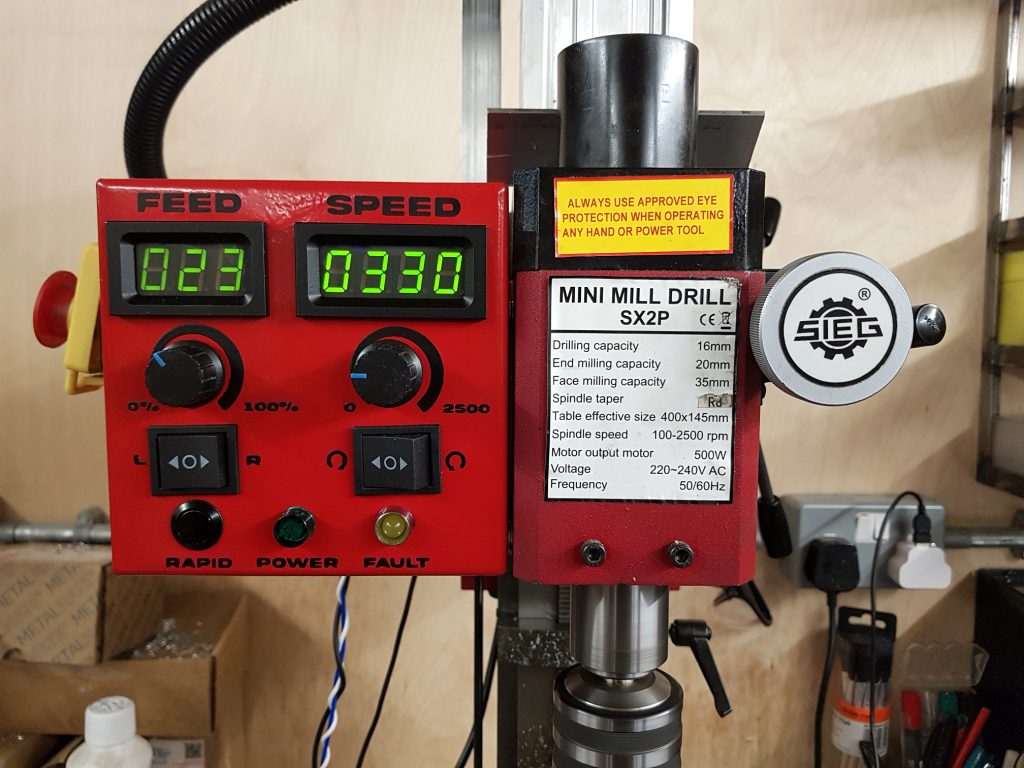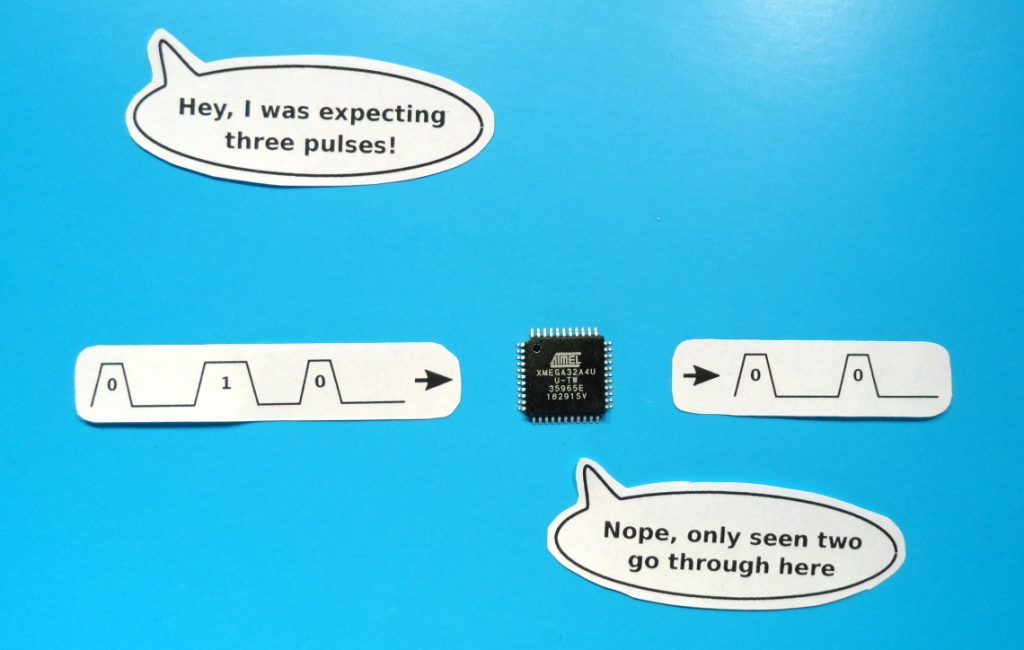 This is a project that I’d been planning on doing for the last 8 years (and I’ve even had most of the part waiting on the shelf for that long). It all started shortly after I got the SIEG milling machine back in 2014, when I ran into this page on macpod.net describing how to add an RPM readout. Well… here we are close to a decade later and I finally got it done, though I did end up doing it in a completely different way (and didn’t use any of the parts).
This is a project that I’d been planning on doing for the last 8 years (and I’ve even had most of the part waiting on the shelf for that long). It all started shortly after I got the SIEG milling machine back in 2014, when I ran into this page on macpod.net describing how to add an RPM readout. Well… here we are close to a decade later and I finally got it done, though I did end up doing it in a completely different way (and didn’t use any of the parts).
Read More →

I’ve very rarely done any threading on my lathe. Changing the gears was always way too much of a pain, which meant I used a die whenever possible and left the gears permanently setup for feed. So after Youtube started recommending videos from Clough42’s series on his Electronic Lead Screw project, I was inspired to do something similar for my Lathe.
Read More →
 This year’s Google CTF was held over the weekend of the 22nd and 23rd of June, which for me was terrible timing. First it ended only one day before I was off to Glastonbury Festival, so I was a bit distracted by planning and packing for that. Then I also had a hospital appointment on the Saturday afternoon, which ate several hours of my time. But at least I did finally get to try one of these competitions live.
This year’s Google CTF was held over the weekend of the 22nd and 23rd of June, which for me was terrible timing. First it ended only one day before I was off to Glastonbury Festival, so I was a bit distracted by planning and packing for that. Then I also had a hospital appointment on the Saturday afternoon, which ate several hours of my time. But at least I did finally get to try one of these competitions live.
I set myself a target of getting into the top 100, which I didn’t achieve, but I was so close… I was only one stupid mistake away from solving the second problem that would have got me to my target. After the competition ended and I realised what I’d done I was able to finish solving it in less than an hour, but… too late!
Read More →
 On Sunday I happened to notice that Google have taken down the challenges from their 2018 CTF competition, replacing the site with a notice about the imminent arrival of the 2019 one. This prompted me to revisit a couple of the challenges that I’d made progress on, but hadn’t completed, and with a little bit of cheating I’ve managed to finish them.
On Sunday I happened to notice that Google have taken down the challenges from their 2018 CTF competition, replacing the site with a notice about the imminent arrival of the 2019 one. This prompted me to revisit a couple of the challenges that I’d made progress on, but hadn’t completed, and with a little bit of cheating I’ve managed to finish them.
Read More →

I recently discovered the world of hacking CTF competitions. These competitions often contain a selection of individual challenges that exercise a whole range of skills related to hacking and computer security, but they all have one common goal… find the flag… which is usually just a recognisable, but hard to guess text string.
It all started after Youtube recommended a few videos from the LiveOverflow channel. That channel belongs to a German guy who’s created a large collection of short and easy to follow videos that give an excellent introduction to the subject. Then more recently I was watching another Youtube video where someone else was walking through the process of solving some of the challenges from the 2018 Google CTF competition. This video started by describing the Wired CSV challenge, where you’re given a photograph of a logic analyser connected to a chip and a CSV file containing the readings.
I immediately knew that i could solve this and had to stop the video before I got any spoilers. So I set aside a weekend and decided to see how much I could do in the same 48 hour period that I’d have had if I’d entered the real competition.
Read More →
 After getting the Vive position sensors working in my last post, I’ve been working on the next piece of the puzzle… how to send all of the positions back to the controller.
After getting the Vive position sensors working in my last post, I’ve been working on the next piece of the puzzle… how to send all of the positions back to the controller.
I’ll have a collection of position sensors linked together in a chain, and I’ll need to send the positions back along the chain to the controller, using as few wires as possible. This is really similar to sending colour information out to a chain of LEDs, just in the opposite direction, so I thought I might be able to use the same single wire signalling system.
Unfortunately, due to a quirk of the pulse width capture mode of the AVR Xmega’s timers, this didn’t work out.
Read More →
 I’ve got a crazy idea for a new extension to my HDMI Light project… I’ll save the details for another day, but it will only work if I can accurately find the position of many small objects. I’d considered a few options, but as I’ve got an HTC Vive VR system, I thought I might be able to use its tracking system to do the locating.
I’ve got a crazy idea for a new extension to my HDMI Light project… I’ll save the details for another day, but it will only work if I can accurately find the position of many small objects. I’d considered a few options, but as I’ve got an HTC Vive VR system, I thought I might be able to use its tracking system to do the locating.
Read More →

One of the reasons that I’ve not posted anything new recently is that I’ve been learning to play the guitar, and now that I’ve got to the point where I can play some almost recognisable songs, I wanted some accompaniment and bought a cheap electronic drum kit. I took the cheaper option and got a kit that had a mesh snare and rubber toms, but then instantly regretted not getting the full mesh kit as the rubber pads make a lot more noise.
I thought I could just buy mesh replacements but the cheap ones aren’t sold separately and the easily available Roland ones are very expensive. Luckily it turns out that it’s really easy to make them at home. The actual sensor is just a simple piezo element, there’s no active electronics in the pads at all.
Read More →

Recently a question came to me from a friend of a friend… they had a globe that displays text messages that they wanted to use as a Christmas decoration, the only problem was that they couldn’t change the message because it was password protected… could I unlock it?
Hmm… maybe… bring it round and I’ll take a look…
Read More →

One problem with my HDMI Ambilight project is that it can’t handle encrypted content, or more accurately, it can only handle encrypted content if I spend a lot of money and get an HDCP license, which would then allow me to buy the version of the ADV7611 chip that has built-in HDCP keys. While this doesn’t cause me much of a problem as I tend to watch almost everything via MythTV, with the TV on the HDMI port and the HDMI Light on the DVI port, it would be nice to be able to use an HDMI splitter between my AV receiver and TV instead, and have it still work on the odd occasion when I watch a BluRay directly.
Luckily, my post announcing HDMI Light version 2 was featured on Hackaday, where a couple of people pointed out that it’s actually quite easy to disable the encryption in some HDMI splitters, effectively turning them into HDCP strippers. Even more helpfully, RoyTheReaper described exactly how to disable the encryption in an HDMI splitter I had lying around in my junk box.
While his method works perfectly as far as disabling the decryption is concerned, it has the side effect of also disabling all of the nice little extras that come with HDMI like automatic input switching and controlling the AV receiver volume from the TV remote. What I needed to do was find a way to let the microcontroller in the splitter continue to do all the other things it does while stopping it from enabling encryption.
Read More →
Recent Comments